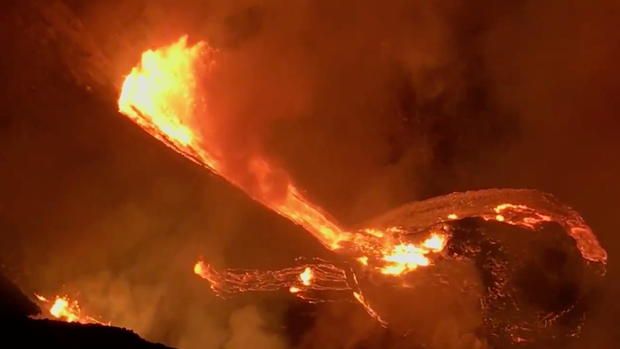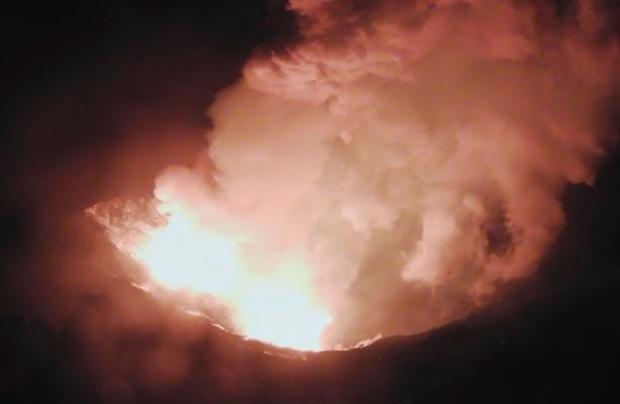Honolulu, Hawaii — The Kilauea volcano on Hawaii’s Big Island has erupted, the U.S. Geological Survey said, about an hour before an earthquake struck the area. The eruption began late Sunday within the within Halema’uma’u crater, which is located within Hawaii Volcanoes National Park.
A magnitude 4.4 earthquake hit about an hour after the volcano began erupting.
By 1 a.m., USGS officials told CBS affiliate KGMB-TV that there were reported lava fountains shooting about 165 feet into the sky and feeding a growing lava lake within the crater that used to hold water.
In addition to changing the volcano alert level, the US Geological Survey also changed the aviation code color to “red” ― a warning for aviators to avoid the area, the station reported.
Photos of the eruption that were shared on verified social media accounts for the national park around 10 p.m. showed a bright orange glow with thick smoke rising into the sky.
David Phillips, a Hawaiian Volcano Observatory spokesman, said the agency was monitoring the situation.
“We will send out further notifications on Kilauea and other Hawaiian volcanoes as we observe changes,” he said.
The USGS said it received more than 500 reports of people who felt the earthquake but significant damage to buildings or structures was not expected.
An advisory was issued by the National Weather Service in Honolulu, warning of fallen ash from the volcano. Excessive exposure to ash is an eye and respiratory irritant, it said. The agency later said the eruption was easing and a “low-level steam cloud” was lingering in the area.
Kilauea erupted in 2018, destroying more than 700 homes and spewing enough lava to fill 320,000 Olympic-sized swimming pools. An area more than half the size of Manhattan was buried in up to 80 feet (24 meters) of now-hardened lava. The lava flowed over the course of four months.
Source: Read Full Article


